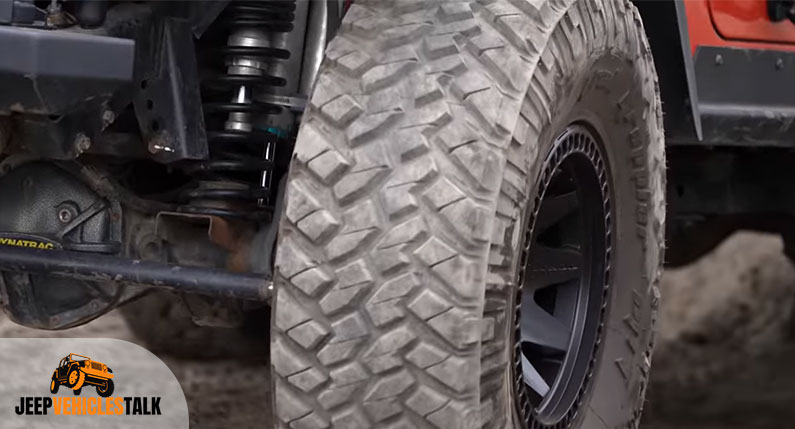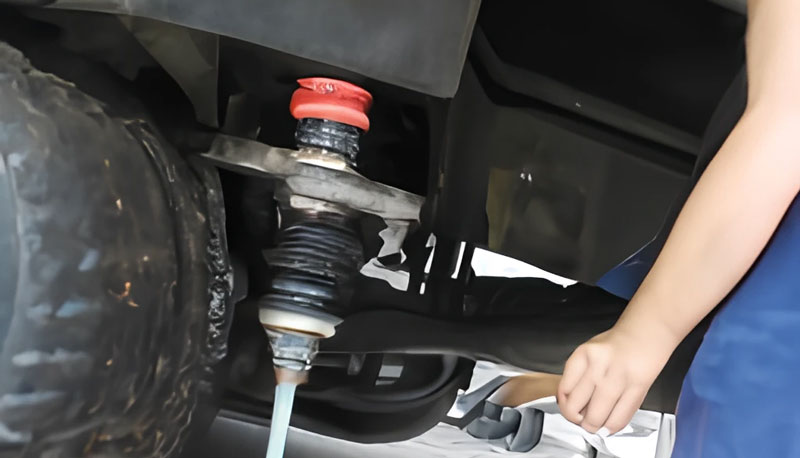Inspecting Jeep JK coil springs condition day after day is one of the key steps of Jeep JK coil springs maintenance. Besides, you shouldn’t allow wear and tear on the coil springs, as they can cause damage. And so regular cleaning is also required with some crucial vital tasks.
When expecting the coil springs of Jeep JK to perform for a long time, it is essential to be careful about their maintenance. But here is where most Jeep JK owners are stuck. They don’t know how to maintain the coil springs carefully and, due to this, look for unexpected replacements.
Following the proper maintenance procedures, it is possible to ensure a long time span for the coil springs.
5 Essential Tips for Maintaining Jeep JK Coil Springs
Someone doesn’t need to be an automotive dab hand in order to perform the regular maintenance of the Jeep JK coil springs. Here, you can follow a few tips from experts’ points of view about Jeep JK coil springs maintenance.
1. Inspect the Condition of the Coil Springs Frequently
Inspecting is the supreme thing Jeep JK owners can do when caring for the coil springs on their Jeep JK. The Jeep JK coil springs play a notable role in stabilizing the vehicle when turning or driving off-road.
And in order to do the job, the coil springs have to consume excessive pressure. Sometimes, the coil springs become damaged due to excessive pressure, and after a few days, they can be broken. And anyone shouldn’t allow this to happen.
So, when someone regularly inspects the coil springs, they can be updated about their actual conditions. If the springs are misaligned, it is possible to determine this after deep inspection. And then can align the coil springs using a wrench of the coil spring compressor.
However, when any major cracks on the coil springs arise, then it indicates that they need replacement, as repairing the coil springs won’t be a decent move. Here’s a video on how to check the coil springs for damage.
2. Don’t Overload Jeep JK
It is crucial to be aware of the weight capacity of Jeep Jk. And based on that, carrying items on the vehicle is recommended. The Jeep JK comes with a payload capacity of 1215.00 pounds. However, it is better to know the weight captivity of a particular Jeep JK from the owner’s manual or ask a dealer.
If you put excessive weight on a Jeep JK, the weight will pressure the coil springs. And due to this, the coil springs can be misplaced, cracked, or broken. So, owners should avoid overloading their Jeep JK when expecting a longer life span of coil springs.
3. Clean the Coil Springs After Driving Through Off-Road
There are harmful particles like dust, dirt, sand, road salt, and more on the roads where you often drive Jeep JK. Or, you may drive over rough terrain too often. And when these harmful particles come in touch with the coil springs and stay with them for a long time, this can cause excessive wear and tear.
And due to the excessive wear and tear, the coil springs installed on Jeep JK are supposed to be damaged. So, you should clean the coil springs regularly, especially after driving off-road. This won’t allow wear and tear to stay on the coil springs, not making them worthy of replacement.
4. Lubricate the Coil Springs
Like cleaning the coil springs regularly, it is vital to be entirely up to the mark when lubricating them. And it is always better to lubricate the coil springs installed on Jeep JK right after cleaning them. There are a good number of lubricant sprays available on the market.
Here you can check this video on gently lubricating the coil springs.
5. Replace the Coil Springs When Required
Experts recommend not to drive Jeep JK without properly functioning coil springs. And whenever the urgency of replacing the coil springs occurs, you shouldn’t delay getting the job done. Replacing the coil springs of the Jeep JK won’t cost too much money, and you can do the job on your own.
On average, you can expect the coil springs on Jeep JK to last around 70,000-90,000 miles without any issues. But, based on driving conditions and frequency of maintenance, you should replace the coil springs if they require replacement.
What Happens When Coil Springs Go Bad?
Experiencing the coil springs on your Jeep JK going bad is a significant concern. If you continue driving your Jeep JK in this condition, it may bring costly repairs which you might not be ready to bear. But can this happen?
Loss of control
The coil springs play their part in keeping Jeep JK on track by improving handling while someone is driving it. The Jeep JK becomes unsteady when the coil springs go bad. And do you know what this means? You may lose control of your vehicle while driving, especially when making turns.
Excessive Vibration
If the coil springs of Jeep JK go bad, mainly due to excessive rubbing or sagging, drivers and passengers will experience excessive vibration. The coil springs, along with the vibration, will start making strange noises when misplaced or broken. Too much vibration can also occur due to incorrect installation of the coil springs.
Damage to Other Components
Let’s say one of the coil springs (or many) of the Jeep JK goes bad, and a driver still has not stopped driving the SUV yet.
The other components, like shocks, struts, tires, etc., can also be prone to malfunction because they have connections to coil springs. When the Jeep JK components that are responsible for smooth ride malfunction, this will reduce the performance of the SUV.

What Damages Coil Springs?
The coil springs installed on Jeep JK can damage over time. But this should not happen too frequently unless something significantly breaks down. Among the basic reasons, the coil springs can be damaged when there is too much pressure on the coil springs.
When someone puts excessive weight on a Jeep JK while carrying items, the shock absorbers that play a crucial role in protecting Jeep JK from bumps can go bad. And thus, there will be more pressure on the coil springs than how much pressure it can handle.
In addition, significant collisions of Jeep JK can be a possible cause behind the damaged coil springs. So, whenever you discover the coil springs in damaged, broken, or worn out condition, checking the facts will help determine the issue.
How Do I Know if My Coil Springs Are Worn Out?
Multiple symptoms can tell us that the coil spring installed on Jeep JK is worn out. Moreover, looking at the coil springs carefully makes it possible to determine whether something is wrong with them.
- Rust and corrosion on the coil springs.
- Sagging coil springs.
- Unstable driving (bouncing).
- Excessive vibration from the coil springs due to rubbing.
- Strange noise (rattling) comes from the coil springs.
- Wear and tear on tires.
- Inappropriate ride height.
How Many Years Do Coil Springs Last?
The coil springs can last up to 10 years. Moreover, coil springs are not the components that Jeep JK owners need to change at regular intervals. Even the coil springs installed on Jeep JK can last the vehicle’s lifetime, as reported by many users.
Then again, proper maintenance is the precondition of having coil springs that can last for a long time.
However, depending on driving conditions, the lifespan of the Jeep JK coil springs can vary. For example, too much off-road driving makes the coil springs prone to wear and tear too early. Due to a few reasons, the coil springs need replacement even if the regular lifespan of the components is yet to extend.
Will New Coil Springs Improve Ride?

Yes, the new coil springs can surely improve the ride quality of vehicles. The purpose of coil springs is to allow improved ride. But when the coil springs become bad, they can meet their purpose. In this case, replacing the coil springs with new ones becomes essential.
The new coil springs do the job by absorbing road impacts comprehensively compared to the old or malfunctioning coil springs. As the day advances, the coil springs become weaker, especially when driving off-road too often. And then, the demand for installing new coil springs emerged.
Thanks to the highly impressive compressor power of the new coil springs, in order to make things happen by ensuring top-notch handling and braking performance.
Conclusion
It is essential to follow the maintenance suggestions of the coil springs manufacturer along with what we have mentioned above. Making a maintenance schedule and sticking with it is the best thing one can do in order to ensure longer lives of the coil springs.
When the need to replace the coil springs on Jeep JK arises, owners should make any delay in order to ensure stable driving on both off-road and highways.
